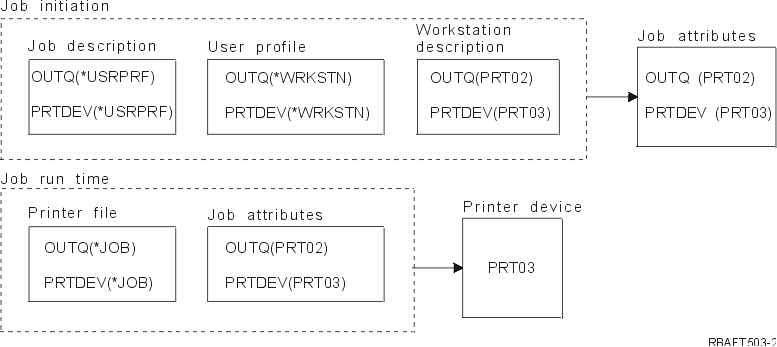
In the printer file, assume that:
Also assume that there has not been a switch to an alternate user profile.

At job initiation, the following takes place:
The system looks at the OUTQ parameter in the job description. That value, *USRPRF tells the system to look at the OUTQ parameter in the user profile. In the user profile, the OUTQ parameter value is *WRKSTN. This value tells the system to look at the OUTQ parameter in the workstation description. The OUTQ value in the workstation description is PRT02. This value is stored as the OUTQ value in the job attributes.The system looks at the PRTDEV value in the job description. That PRTDEV value in the job description is *USRPRF. That value tells the system to look at the PRTDEV value in the user profile. The PRTDEV value in the user profile is *WRKSTN. That value tells the system to look at the PRTDEV value in the workstation description. The PRTDEV value in the workstation description is PRT03. This value is stored as the PRTDEV value in the job attributes.
At job run time, the following takes place:
The system looked at the printer file and found the PRTDEV parameter value to be *JOB, which tells the system to look next in the job printer attribute PRTDEV.In this example, that value is PRT03.
In this example, the printer file specified SPOOL = *NO. Your output would go directly to PRT03 for printing and no output queue would be used.
- Remember:
You must know the value (*YES or *NO) of the SPOOL parameter in the printer file to determine if your output goes to an output queue or to a printer. If SPOOL = *YES, a spooled file goes to an output queue. If SPOOL = *NO, the output goes directly to a printer.